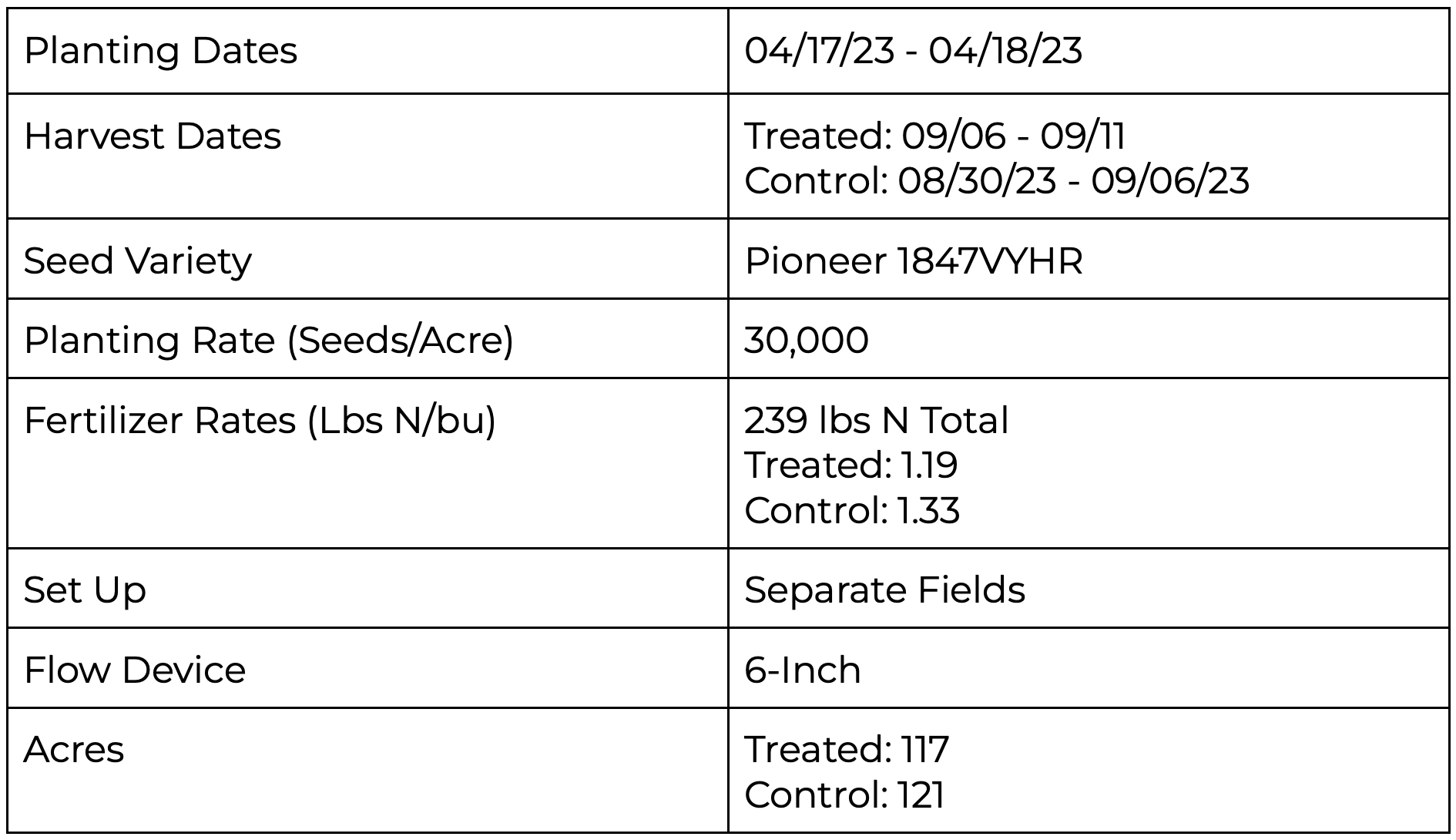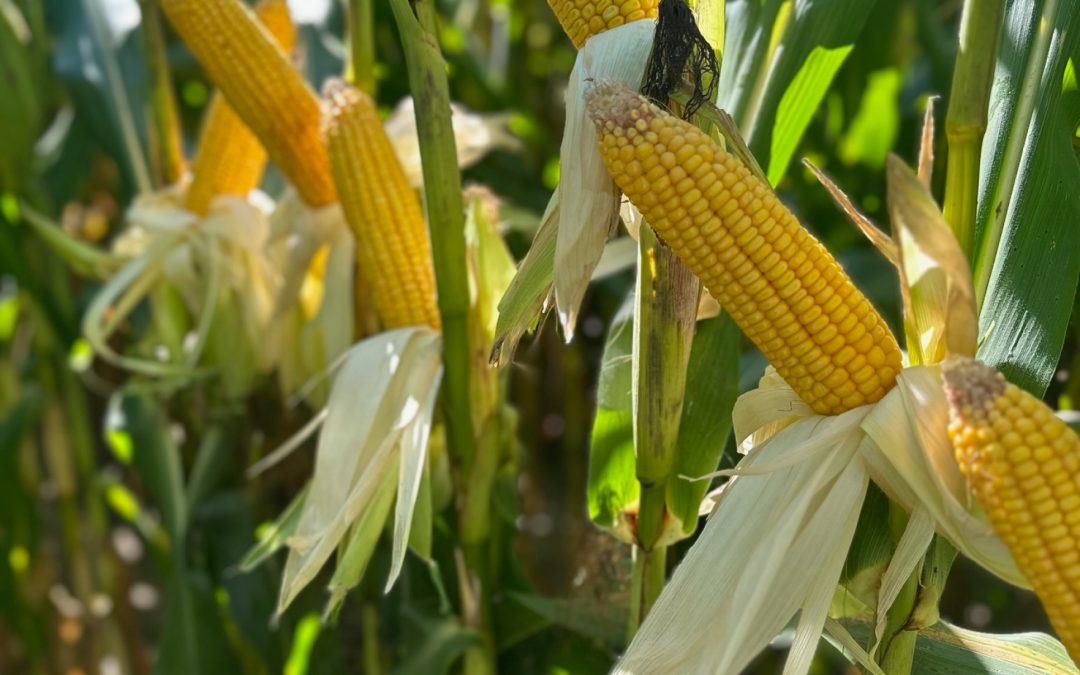BACKGROUND
Production Year: 2023
Location: Alfalfa, OK
Program: UpTerra Water and Row Crop General Wellness

Challenge(s):
Water scarcity, excess heat, and weeds.
Goal:
Higher yield
METHODS
- Soil type and slope were evaluated to confirm comparability between both fields (Figure 1).
- Weather and historical performance were considered during the set-up and analysis phase of the case study.
- Planting populations, seed variety, and planting dates remained consistent between control and treatment fields.
- Fertilizer and irrigation rates were reduced on the treatment fields due to logistical challenges from the grower. However, it provided an opportunity to demonstrate the UpTerra System’s ability to maintain or improve yield despite input reductions.
- During the growing season, the water well for the treated field had mechanical issues; therefore, the pivot did not run for 2-3 days while the well was repaired. This gave the control field an advantage in water application.
- 10% less fertilizer was applied on the treated field. The grower intended to put 30 more pounds but didn’t get the last shot down.
- Harvest was delayed by a week due to increased moisture retention on the treated side.
- Industry-standard scouting techniques were implemented throughout the season to monitor early crop development.
- Tractor data was used to compare final yield results.
Data Collected
- Yield – Tractor
- Satellite Imagery
- Scouting – General
- Historic Data
- Testimonial(s)
Soil Map Data
All soil types were silt loams with minimal variation. There is a slight slope difference in the control field but at such a minimum occurrence that the fields act well as fair comparisons.


Weather
At the beginning of the season, April had 1.71” of rain coming in, which was 1.03” below the average rainfall amount for that month, while temperatures were not far from the average. Rainfall increased but still came in .67” behind the monthly average in May with just 3.11” of rain. Temperatures, however, remained close to averages. June saw a huge spike in rainfall with an accumulation of 6.81” which is almost double the average of 3.43.” Temperatures remained an average of 2 degrees lower. Towards the end of the season, rainfall still remained above average by .59” while temperatures stayed closer to average but still a bit lower than the monthly average.
RESULTS
Yield

Based on the scale tickets, the UpTerra treatment generated a 10.8% increase in bushels per acre of harvested grain compared to the control field. This resulted in an additional income of $101.00 per acre and a cost savings of $617 on fertilizer.
*Assumptions: Income of $5.00 per bushel & Fertilizer cost of $0.60 / lbs N

Bushels Per Acre
10.8% Change
Income Generation

Fertilizer Cost Savings

Agronomy Field Assessments
Both fields were visited on a weekly basis, so crop development could be noted and any practice differences could be documented. The treatment field’s higher yield validates field observations that the UpTerra System provided.

May 9, 2023
Early vigor comparisons between treated and control plants
Observations:
•Greater leaf area
•Increased root mass
•Taller stand height

May 15, 2023
3-4 leaf growth stage comparisons between treated and control plants
Observations:
•Increased biomass
•Greater root mass
•Taller stand height
Testimonial
Based on the results from the 2023 season, the grower intends to convert 100% of his irrigated acres to the UpTerra System.
CONCLUSION
The results indicate that the UpTerra System had a positive effect on yield, plant development, and farm operation savings. Specifically, there was a yield increase of 10.8% bushels per acre. The grower had a 100% return on investment, generating approximately $101 per acre in additional income and saving $617 on fertilizer costs. Throughout the season, noticeable improvements were observed in the field, including greater biomass and taller plant height. The case study demonstrated that the UpTerra System works well under stress conditions and can keep up and even improve yield despite differences in watering and fertilizer rates. Looking ahead, the UpTerra data team plans to enhance the data collection process by incorporating soil moisture and soil microbiome testing in these fields. These measures will provide a more comprehensive understanding of the UpTerra System’s effects over time.

